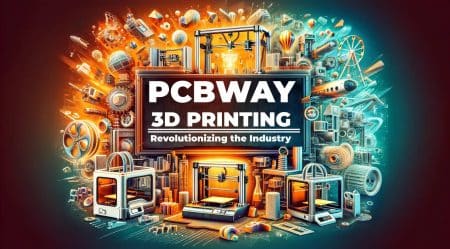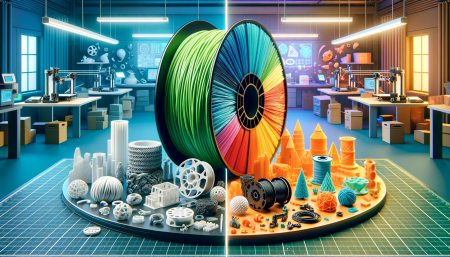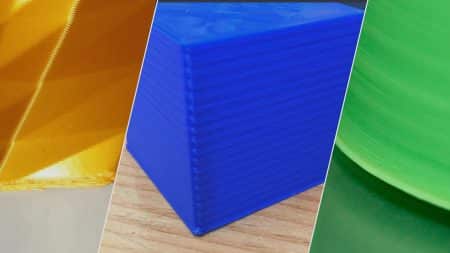PCBWay has consistently been at the forefront of the rapidly changing fields of 3D design and CNC machining, providing cutting-edge solutions to its clients. Their new partnership with the open-source parametric 3D modeler FreeCAD demonstrates their dedication to delivering smooth and effective services.
Why is this Collaboration Significant?

The alliance between PCBWay and FreeCAD is more than just another tech partnership; it’s combining two industry titans to redefine the relationship between 3D design and production. Let’s examine this alliance’s significance in more detail:
- Strengthening the Open-Source Community: As an open-source platform, FreeCAD stands for a community of programmers, designers, and enthusiasts who recognize the value of knowledge sharing. PCBWay can access this enormous talent pool and support open-source values, including transparency, cooperation, and mutual development through working with a platform like this.
- Streamlining the Design-to-Production Process: The traditional process of moving from design to production involves multiple steps, each with potential pitfalls. Transferring files, ensuring compatibility, and managing communications can be cumbersome. This collaboration simplifies that. With a single click, designs made on FreeCAD can be sent to PCBWay for production, eliminating many intermediate steps and potential errors.
- Bridging the Gap between Hobbyists and Professionals: One of the beauties of FreeCAD is its accessibility to hobbyists and professionals. By providing a direct link to a production platform like PCBWay, this collaboration ensures that even individual designers and hobbyists can access professional-grade production facilities, leveling the playing field for all.
- Ensuring Quality and Precision: With the integration of PCBWay’s services into FreeCAD, there’s an added layer of quality assurance. PCBWay’s commitment to double-checking files before production means that designs are not just produced but are produced with precision and adherence to quality standards.
- Fostering Innovation: By seamlessly transitioning from design to production, designers are encouraged to experiment and innovate. When the process is simplified, designers can focus more on creativity and less on logistics. This could lead to breakthrough designs and innovative products that might not have seen the light of day in a more complicated system.
- Economic Efficiency: Time is money. The quicker the transition from design to production, the faster products can reach the market. This means quicker returns on investment and reduced costs in time spent managing the production process. This can be a game-changer for businesses, tiny and medium enterprises.
- Sustainability and Environmental Responsibility: In a world increasingly conscious of its environmental footprint, efficient production processes mean less waste. By ensuring that designs are checked and optimized before production, this collaboration can lead to more sustainable production practices, with fewer errors and less wastage.
- Strengthening the Ecosystem: Collaborations like these don’t just benefit the two entities involved. They strengthen the entire ecosystem. Seeing this integration’s success, other software developers might be encouraged to develop more plugins and tools, enhancing the overall user experience. Similarly, other production platforms might seek to integrate with design tools, leading to a more interconnected and robust ecosystem.
- Endorsement of FreeCAD’s Capabilities: PCBWay’s decision to collaborate with FreeCAD is also a significant endorsement of the software’s capabilities. It sends a strong message to the design community about FreeCAD’s reliability and robustness as a design tool.
- Future Collaborations and Integrations: This collaboration could be the first of many. The success of this integration could pave the way for more such partnerships between design tools and production platforms, leading to a more integrated and seamless design and production landscape.
In essence, the collaboration between PCBWay and FreeCAD is not just about simplifying a process; it’s about reimagining how design and production can come together. It’s about fostering innovation, ensuring quality, and building a stronger, more interconnected community of designers and producers.
How Does It Work?

Integrating PCBWay’s services into FreeCAD is a groundbreaking 3D design and production move. But how exactly does this seamless transition from design to production take place? Let’s break down the process step by step:
- Initiating the Design in FreeCAD: The journey begins in the familiar environment of FreeCAD. As an open-source parametric 3D modeler, FreeCAD offers many tools and features that allow designers to create intricate and detailed 3D models. Whether you’re designing a simple object or a complex machinery component, FreeCAD provides the flexibility and precision required.
- Completion and Verification: Once the design is complete, verifying and ensuring that the model meets the desired specifications is essential. This might involve running simulations, checking dimensions, or ensuring the design is optimized for production.
- One-Click Transfer: Here’s where the magic happens. With the PCBWay plugin integrated into FreeCAD, transferring your design to PCBWay for production is as simple as clicking a button. This one-click transfer ensures that the step files containing all the necessary design information are sent directly to PCBWay without needing intermediate file conversions or transfers.
- Uploading and Processing: Once the step files are transferred, they are quickly uploaded to PCBWay’s platform. This process is optimized for speed, ensuring the files are available for production in seconds. The swift upload time is a testament to the efficiency of the integration and the robustness of PCBWay’s infrastructure.
- Quality Assurance by PCBWay: One of the standout features of this collaboration is PCBWay’s commitment to quality. Before the production process begins, PCBWay engineers meticulously review the uploaded files. This double-checking ensures that any potential issues or discrepancies in the design are identified and rectified, guaranteeing a product that matches the designer’s vision.
- Order Placement: With the files reviewed and approved, placing an order is the next step. The “Save to Cart” option lets users initiate the production process quickly. This streamlined ordering system reduces the time between design completion and production commencement, ensuring faster turnaround times.
- Feedback Loop: An essential aspect of any production process is feedback. The integrated system allows for real-time communication between the designer and PCBWay. Suppose there are any queries, concerns, or modifications required. In that case, they can be addressed promptly, ensuring the final product is of the highest quality.
- Production and Delivery: With the order placed and all details finalized, PCBWay’s state-of-the-art production facilities swing into action. Employing the latest CNC machining and 3D printing technologies, PCBWay ensures that the designs are brought to life with unparalleled precision and quality. Once produced, the products are shipped to the desired location, completing the end-to-end process.
- Continuous Updates and Support: The collaboration doesn’t end with the delivery of the product. Both FreeCAD and PCBWay are committed to providing continuous updates and support to users. Whether it’s new features in the plugin, improvements in the production process, or addressing user feedback, the collaboration is dynamic and ever-evolving.
- Community Engagement: Engagement with the broader design and production community is integral to this collaboration. Users are encouraged to share their experiences, provide feedback, and suggest improvements. This community-driven approach ensures the integration remains relevant, user-friendly, and at the forefront of technological advancements.
In summary, integrating PCBWay’s services into FreeCAD is not just about simplifying a process; it’s about creating a holistic ecosystem where designers and producers come together to bring visions to life. The step-by-step process ensures efficiency, quality, and an unparalleled user experience in the industry.
Easy Installation Process
For those who wish to avail of this feature, the installation process is straightforward:
Official FreeCAD Tools Installation:

- Navigate to “tools” within FreeCAD.
- Select “Addon manager.”
- Choose “PCBWay” from the selection list and install it.
Manual Installation:

- Download the latest file from PCBWay’s GitHub repository.
- Click on “Macro” within FreeCAD.
- Place the downloaded python file in the specified path.
- Finally, click “execute” to complete the installation.
Supporting the Open Source Community
As a proud sponsor of FreeCAD, PCBWay is committed to supporting its development continuously. They express their gratitude to the open-source community and encourage feedback or questions. For any queries or feedback, you can reach out to anson@pcbway.com.
In Conclusion: A New Era of Design and Production
The collaboration between PCBWay and FreeCAD is more than just a partnership; it’s a revolutionary step that bridges the gap between design and production. By integrating the vast capabilities of FreeCAD with the production prowess of PCBWay, both entities have ushered in a new era where innovation, efficiency, and quality take center stage. Whether professionals or hobbyists, designers now have a streamlined pathway to bring their visions to life, with the assurance of precision and quality that PCBWay offers.
Moreover, this collaboration is a testament to the power of community-driven initiatives. By tapping into the open-source ethos of FreeCAD, PCBWay not only endorses the spirit of shared knowledge but also paves the way for future integrations and collaborations. The dynamic nature of this partnership, coupled with the commitment to continuous improvement, ensures that users will always have access to the best tools and services.
But the journey doesn’t end here. As we move forward, the feedback and experiences of the community will play a pivotal role in shaping the future of this collaboration. Your insights, suggestions, and experiences are the driving force behind continuous innovation.
If you’ve found this article insightful, don’t forget to subscribe to our blog for more updates on the latest in 3D design and production. Your voice matters to us! Share your thoughts, experiences, or questions in the comments section below. Let’s foster a community where knowledge is shared and innovation thrives. Subscribe now and be a part of this exciting journey!






